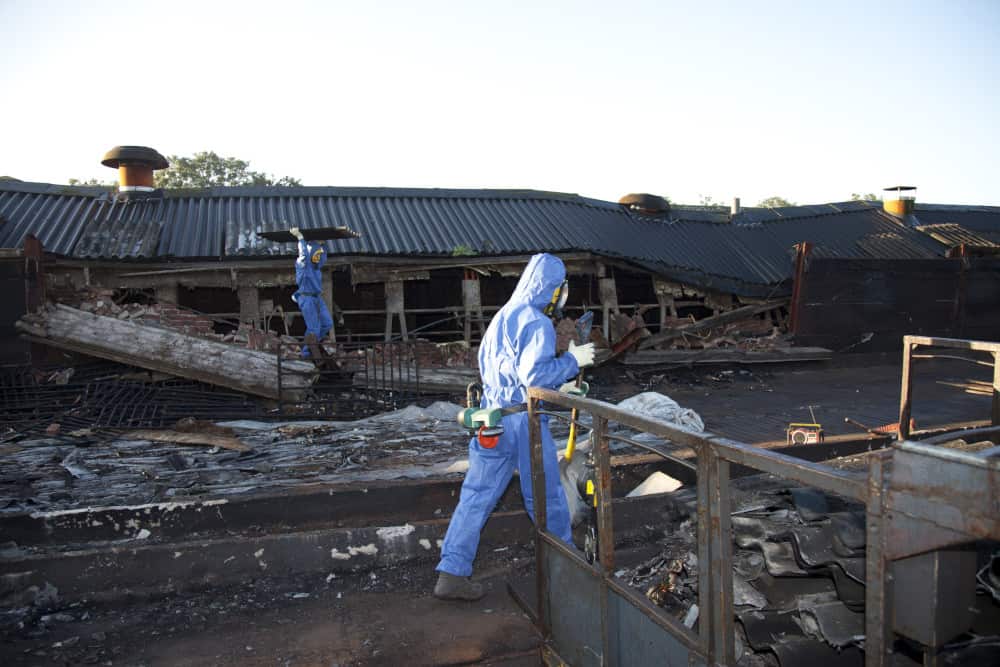What Tools Not to Use When Removing Asbestos?
Before beginning, just know that any work containing asbestos must be evaluated for its scope and complexity, as well as its likelihood of completion. Consider hiring a professional when you think you can’t do the job on your own.
Should you opt to do the work independently, it’s essential to figure out how many sessions you’ll need to do it in. Asbestos removal requires a significant investment of time and money; thus, this is a critical step in the process. When it comes to safety, we’ll speak about what kind of gear you must be employing. It is essential to know which instruments are not safe to use while eliminating asbestos.
Essential Tools You Can Use If
- Throughout their operation, the hardware is kept contained.
- The equipment and materials are utilized in a manner designed to reduce or collect all flying asbestos properly.
- The hardware is intended to restrict or catch asbestos fibers in the atmosphere, and they are employed in line with its specifications.

Tools Not to Use
The use of special equipment and tools on any asbestos-containing substance is forbidden under New South Wales legislation. These would be the items that cannot be used while eliminating asbestos from a building:
- High-pressure nozzles, water spray, power drills, and comparable equipment and gadgets are prohibited.
- Compressed air is used in many applications (limited usage allowed).
- A wide range of high-speed solid equipment, including abrasives, drilling and sawing machines, angle grinders, and other supplies and equipment, such as brooms, may cause the emission of tiny asbestos fibers into the airflow.
Safety Measures You Should Take During the Removal Process
- Always operate in properly ventilated places and, if feasible, outside (but not in powerful winds).
- Reduce the amount of cracking or chopping of asbestos-containing materials.
- Maintain the moisture content of the asbestos until it becomes ready to be packaged for shipment.
- Only use non-powered tooling that includes a hand, a guillotine, a hand saw, or a drill instead of power equipment.
- Remove all of the equipment, such as nails, next. This assists in the removal of sheets with the least amount of breaking.
- When laying the tarps on the floor, use caution to ensure that they do not fall. Drop the asbestos sheeting gradually to the floor, and afterwards, lay multiple pairs of polythene sheets (heavy-duty builders’ plastics) on top of them to protect them from further damage.
- The quantity of coarse garbage chips and sand created by such equipment is modest compared to the number of debris bits and grit generated by power tools.
- Wet down every one of the materials entirely before beginning and numerous times throughout the removal process. You may gently mist the edges with water to make them more pliable. Instead, a 1:10 mixture of PVA (polyvinyl acetate) in freshwater may be used. When you’re doing the task outside, you can also employ a hose pipe set at a reduced pressure when you have one.
Key Considerations
Decontamination
To properly dispose of asbestos waste, it is necessary to double-layer and adequately cover the machinery and items which cannot be decontaminated.
The decontamination of all machinery and items used in the process of the licensed asbestos procedure must take place before they’re even relocated away from the location in which the licensed asbestos operation has been completed.
The Removal
To ensure that the tools and equipment are not infected, they must be kept in a closed form until they can be remediated.
Now that you know everything about what tools not to use when removing asbestos, it’s high time you contact a professional asbestos removal company to help you remove all the asbestos in your house!